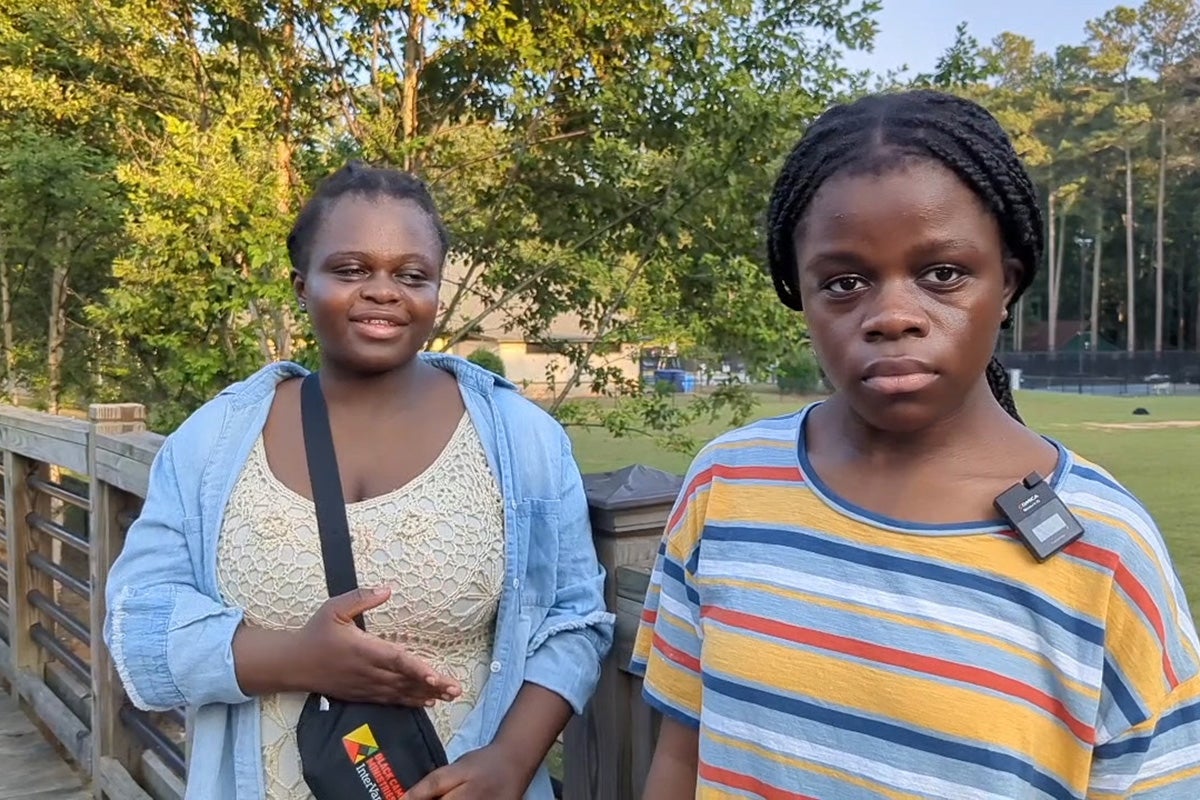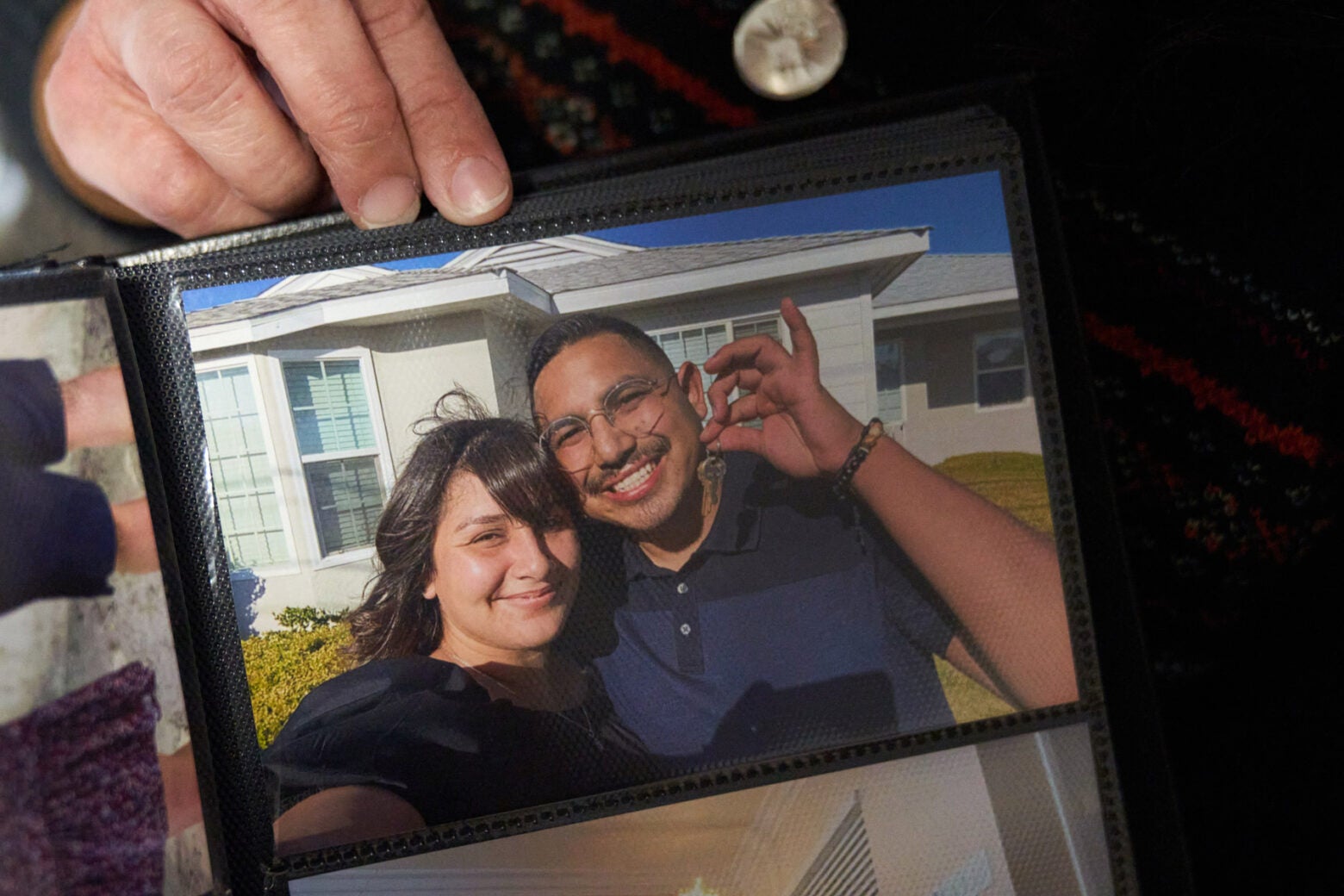
Feature
‘So much death’: lawmakers weigh stricter speed limits, safer roads for pedestrians
This article was originally published by KFF Health News.
The party was winding down in Los Angeles. Its young hosts, María Rivas Cruz and her fiancé, Raymond Olivares, had accompanied friends to their car to bid them farewell. As the couple crossed a four-lane main road back to the home they had just bought, Rivas Cruz and Olivares were struck by a car fleeing an illegal street race. The driver was going 70 in a 40-mph zone.
Despite years of pleading for a two-lane road, lower speed limits, safety islands, and more marked crosswalks, residents say the county had done little to address speeding in this unincorporated pocket of southeastern Los Angeles. Since 2012, this half-mile stretch of Avalon Boulevard had logged 396 crashes, injuring 170 and killing three.
Olivares, 27, a civil engineer for the city of Los Angeles, became the fourth fatality when he was hurled across the street, hit by a second car, and instantly killed. Rivas Cruz was transported to a hospital, where she remained in a coma for two weeks. Once awake, the elementary school teacher underwent a series of reconstructive surgeries to repair her arm, jaw, and legs.
In the aftermath of the February 2023 crash, the county installed protective steel posts midway across the street. But residents, who had sought a platformed center divider and speed cameras, said that wasn’t enough.
“It’s just a band-aid on a cut. This is supposed to solve it, but it doesn’t, and that is what hurts,” said Rivas Cruz, who now at age 28 walks with a cane and lives with chronic pain. “I go to sleep, and I’m like, ‘It’s just a dream, it’s just a dream.’ And it’s not.”
Sign up for Harvard Public Health
Delivered to your inbox weekly.
The nation’s road system covers four million miles and is governed by a patchwork of federal, state, and local jurisdictions that often operate in silos, making systemic change difficult and expensive. But amid the highest number of pedestrians killed in decades, localities are pushing to control how speed limits are set and for more accountability on road design. This spring, New York and Michigan passed laws allowing local jurisdictions to lower speed limits. In Los Angeles, voters approved a measure that forces the city to act on its own safety improvement plan, mandating that the car-loving metropolis redesign streets, add bike lanes, and protect cyclists, transit riders, and pedestrians.
Still, there’s plenty of political resistance to speed enforcement. In California’s Statehouse, Sen. Scott Wiener proposed requiring GPS-equipped smart devices in new cars and trucks to prevent excessive speeding. But after pushback, the state lawmaker watered down his bill to require all vehicles sold in the state starting in 2032 to have only warning systems that alert drivers when they exceed the speed limit by more than 10 mph.
Although the Biden administration is championing Vision Zero—its commitment to zero traffic deaths—and injecting more than $20 billion in funding for transportation safety programs through the Infrastructure Investment and Jobs Act, road safety advocates and some lawmakers argue that the country is still far from making streets and vehicles safe, or slowing drivers down.
“We are not showing the political will to use the proven safety tools that exist,” said Leah Shahum, founder of Vision Zero Network, a nonprofit organization advancing Vision Zero in communities across the country.

María Rivas Cruz survived being struck by a car in southeastern Los Angeles while crossing the street in 2023 with her fiancé, Raymond Olivares, who died at the scene.
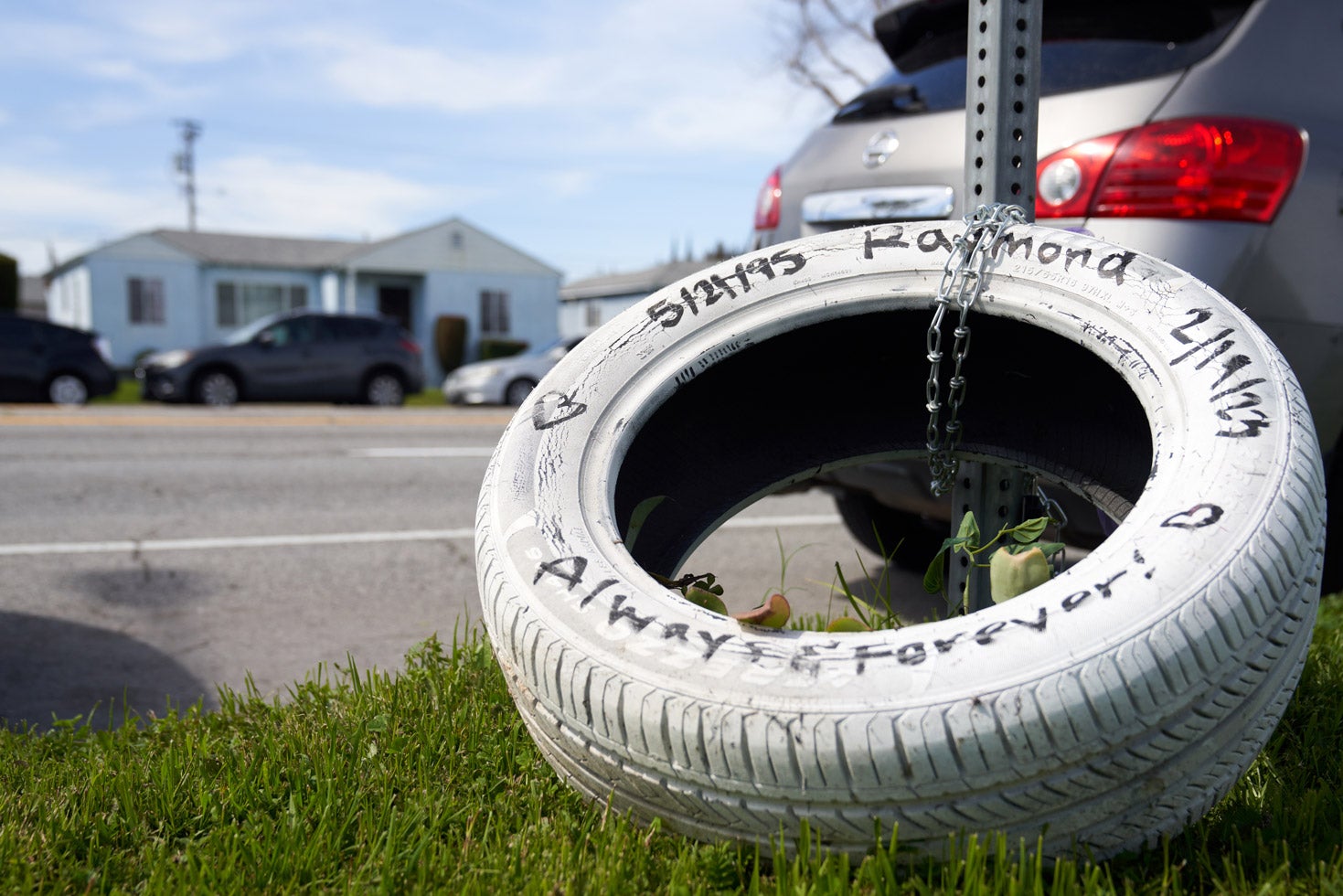
A memorial for Olivares outside his Los Angeles home. Olivares was fatally struck by a car while crossing the street in front of his home last year.
Still a crisis
The need for safer roads took on urgency during the COVID pandemic. Fatalities rose even as lockdown mandates emptied streets. In 2022, more than 42,500 people died on American roads, and at least 7,522 pedestrians were fatally struck—the highest tally of pedestrian deaths in more than four decades.
Experts cite several reasons for the decline in road safety. During the lockdowns, reckless driving increased while traffic enforcement declined. SUVs and trucks have become larger and heavier, thus deadlier when they hit a pedestrian. Other factors persist as streets remain wide to accommodate vehicles, and in some states speed limits have gradually increased.
Early estimates of motor vehicle fatalities show a slight decrease from 2022 to 2023, but pedestrian fatalities are still notably above pre-pandemic numbers. “It’s an encouraging start, but the numbers still constitute a crisis,” Transportation Secretary Pete Buttigieg wrote in February of roadway deaths.
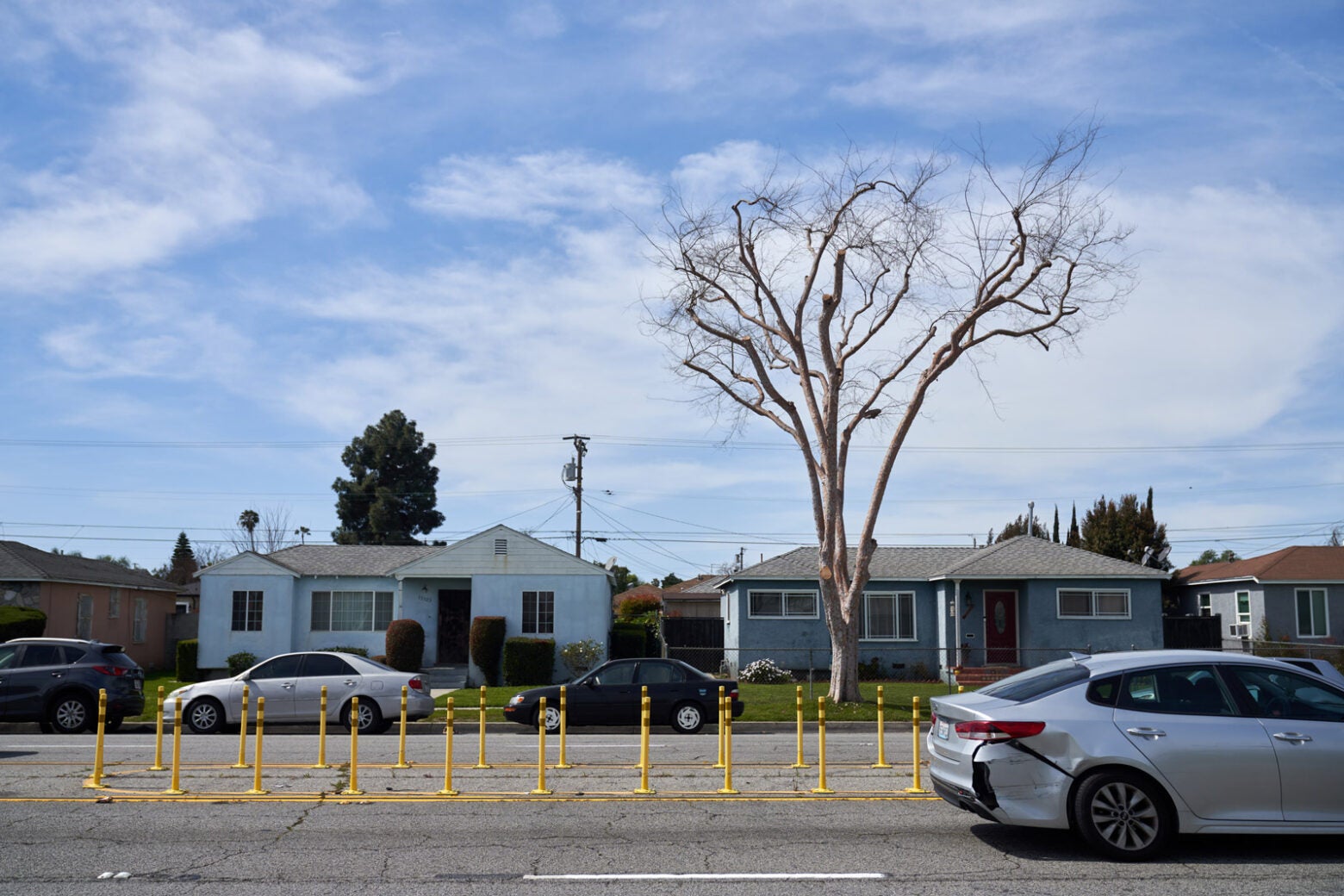
Residents want more than the yellow protective posts erected since Raymond Olivares, a pedestrian, was fatally struck by a car fleeing an illegal street race. They want reduced lanes, lower speed limits, and safety islands.
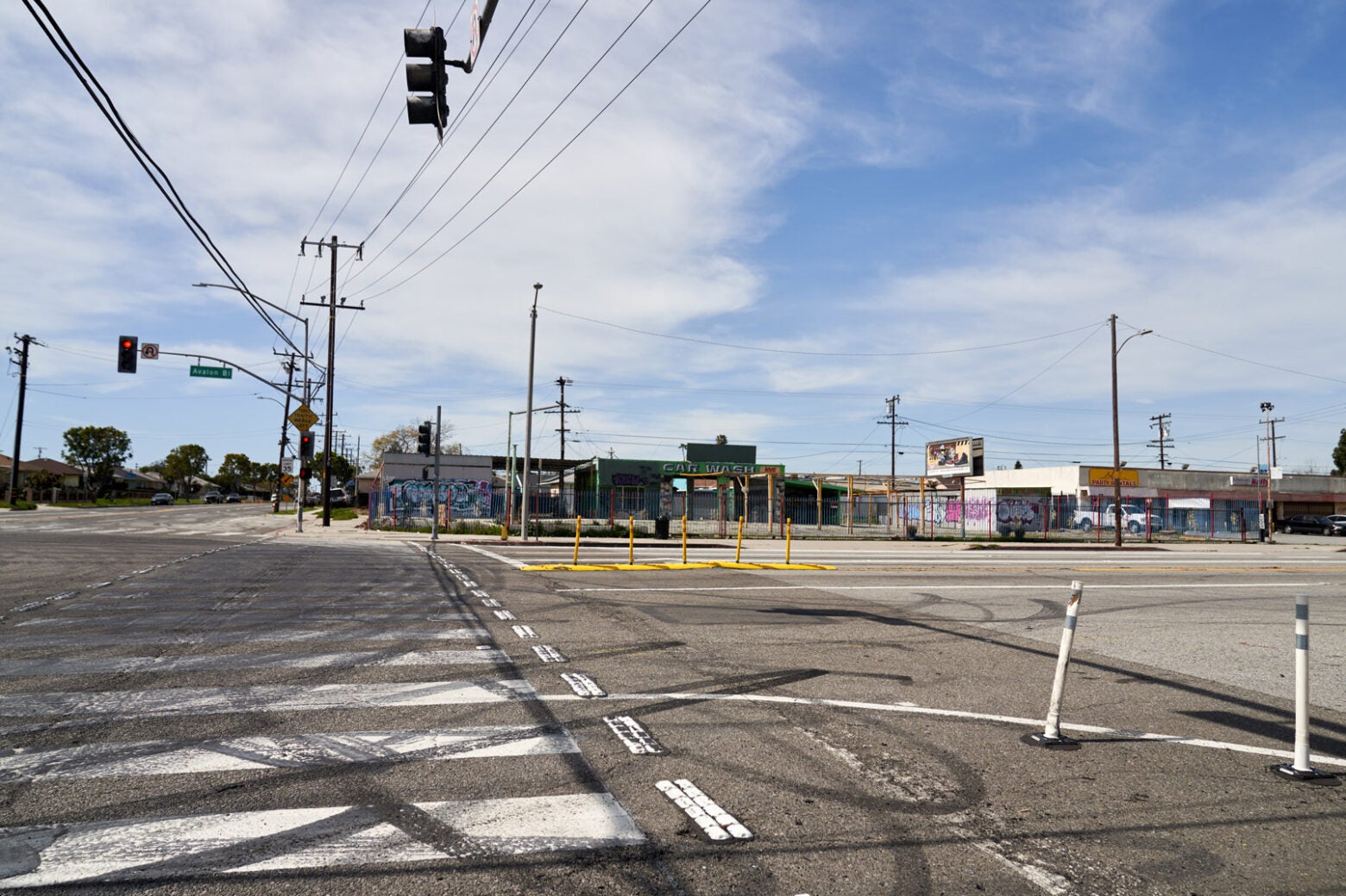
Safety barriers added to a crosswalk in Los Angeles have been damaged and hit by passing cars.
The Biden administration has directed $15.6 billion to road safety until 2026 and $5 billion in local grants to prevent roadway deaths and injuries. Under the U.S. Department of Transportation’s new “vulnerable road user” rule, states with 15 percent or more deaths involving pedestrians, bicyclists, or motorcyclists compared with all road deaths must match federal dollars in their safety improvement spending.
Road safety advocates argue the federal government missed an opportunity to eliminate outdated standards for setting speed limits when it revised traffic guidelines last year. The agency could have eliminated guidance recommending setting speed limits at or below how fast 85 percent of drivers travel on uncongested roads. Critics contend that what’s known as the 85th percentile rule encourages traffic engineers to set speed limits at levels unsafe for pedestrians.
But the Federal Highway Administration wrote in a statement that while the 85th percentile is the typical method, engineers rarely rely solely on this rule. It also noted that states and some local agencies have their own criteria for setting speed limits.
In response, grassroots efforts to curtail speeding have sprouted across communities. In April, Michigan passed legislation granting local governments authority to round down when setting speed limits.
And after four years of lobbying, New York state passed Sammy’s Law, named after 12-year-old Sammy Cohen Eckstein, who was killed by a driver in Brooklyn in 2013. The law, which will take effect in June, allows New York City to lower its speed limits to 20 mph in designated areas.
“With this legislation, I hope we can learn more children’s names because of their accomplishments, their personalities, and their spirit—not their final moments,” said Sammy’s mother, Amy Cohen.
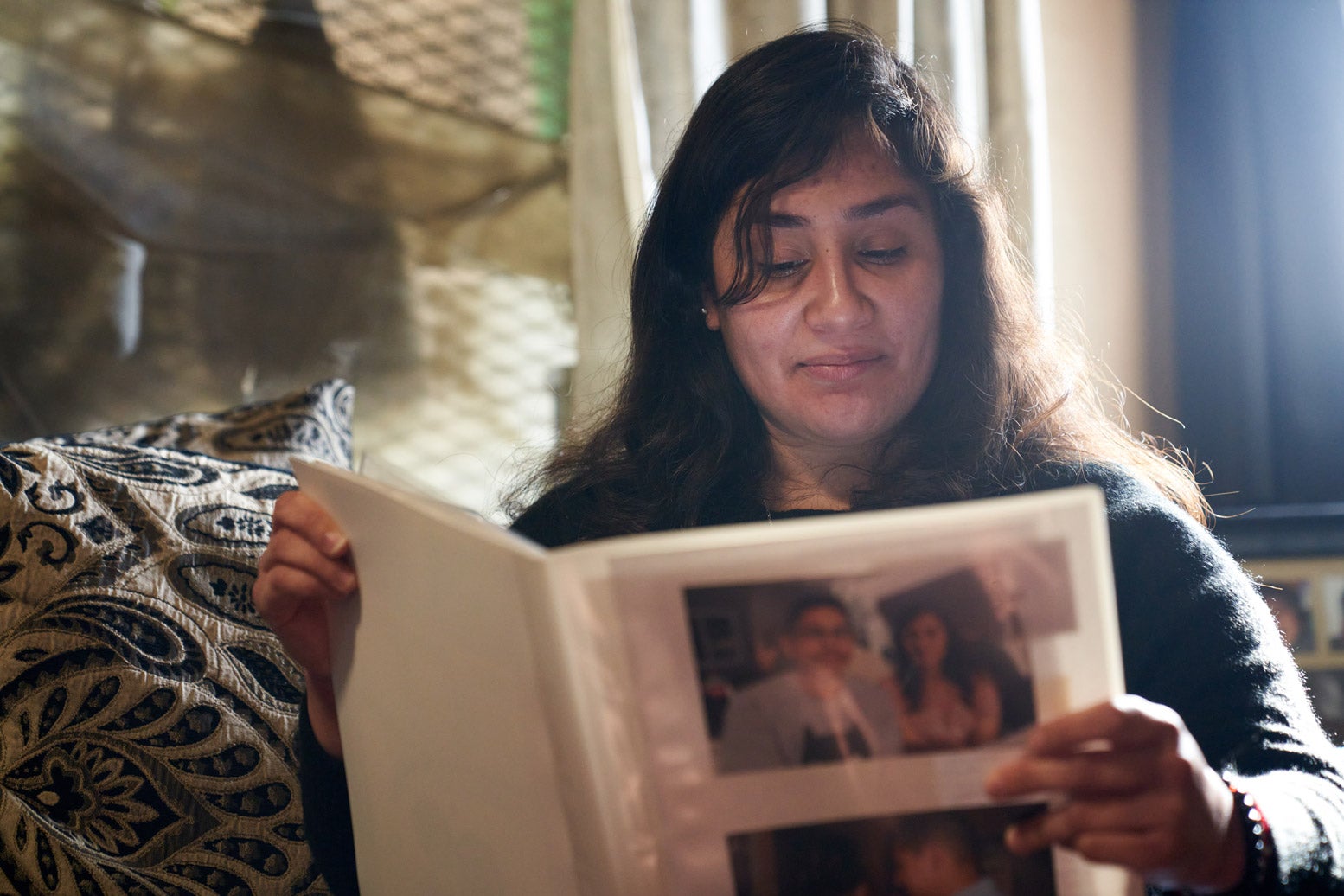
María Rivas Cruz looks through a scrapbook of memories with her fiancé, Raymond Olivares, who died last year after the two were struck by a speeding car outside their home in southeastern Los Angeles.
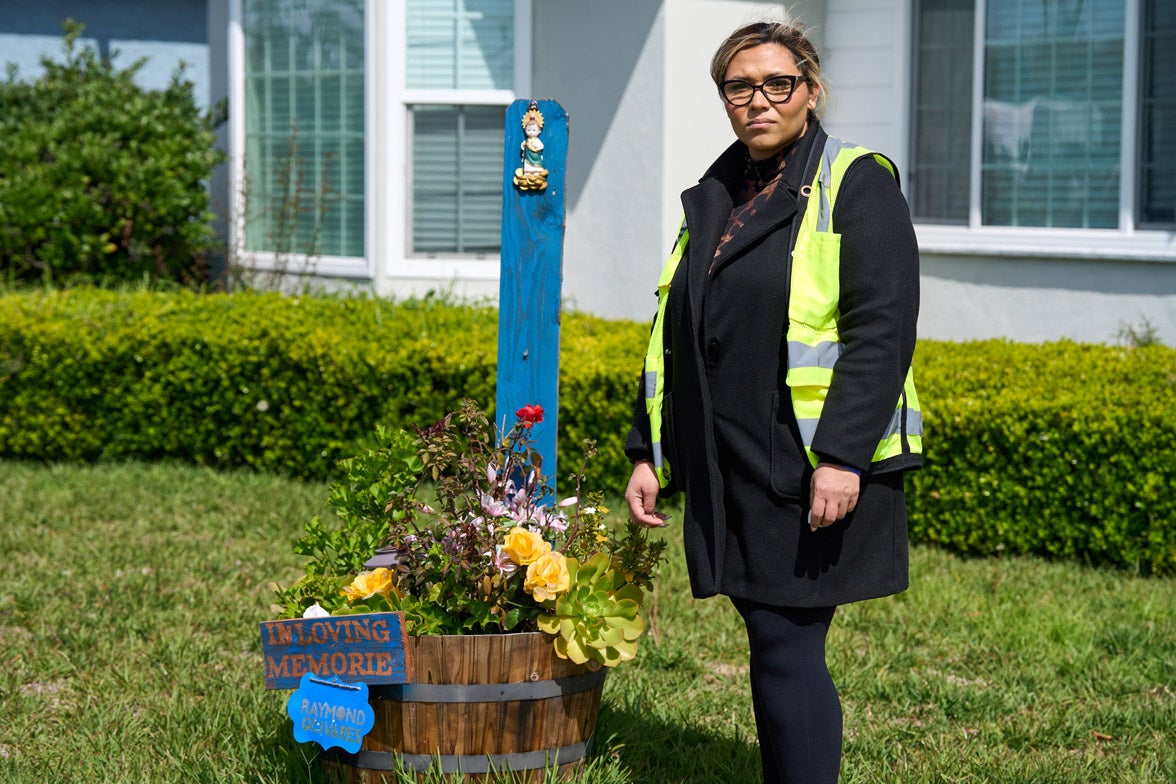
Cindi Enamorado stands beside a memorial for her brother, Raymond Olivares, outside his Los Angeles home.
Push for pedestrian safety
Advocates would also like the federal government to factor in pedestrian safety on the five-star vehicle safety rating scale. However, the National Highway Traffic Safety Administration has proposed a separate pass/fail test that would be posted only on the agency’s website, not on labels consumers would see at the dealership.
Automakers like BMW questioned the effectiveness of a program testing pedestrian protections in vehicles, arguing that in European countries that adopted such a regulation, it’s not been clear whether it led to fewer deaths and injuries. According to the campaign finance site Open Secrets, automakers spent about $49 million lobbying in 2023 compared with $2.2 million spent by advocates for highway and auto safety.
“The federal government has the biggest punch when it comes to requiring improved vehicle safety design,” said Wiener, the California state lawmaker.
Although Wiener modified his proposal to restrict excessive speeding, he has advanced companion legislation that would require Caltrans, the state transportation agency, to make improvements such as adding crosswalks and curb extensions on state-owned surface streets to better serve pedestrians, cyclists, and transit users.
When that bill was heard in a committee, opponents, including engineering firms and contractors, cautioned it would remove flexibility and hamper the state’s ability to deliver a safe and efficient transportation system. Lawmakers have until Aug. 31 to act on his bills.
In Los Angeles, hope for change arrived in March when voters passed Measure HLA, which requires the city to invest $3.1 billion in road safety over the next decade. Rivas Cruz’s house, however, sits eight blocks outside the jurisdiction of the city initiative.
It’s been more than a year since the crash, but Rivas Cruz finds reminders everywhere: in the mirror, when she looks at the scars left on her face after several surgeries, or when she walks on the street that still lacks the infrastructure that would have protected her and Raymond.
Stories of pedestrians killed in this Latino working-class neighborhood are too common, said Rivas Cruz. In September, she attended a memorial of a 14-year-old who was killed by a reckless driver.
“There’s so much death going on,” the Los Angeles Unified School District teacher said from her mother’s living room on a spring afternoon. “The representatives have failed us. Raymond and I were giving back to the community. He was a civil engineer working for the city, and I’m a LAUSD teacher. Where is our help?”
Lead image: María Rivas Cruz and her fiancé Raymond Olivares, who died last year after being struck by a speeding car. The photo from her scrapbook shows them celebrating buying a house together.


